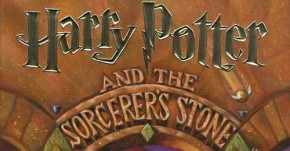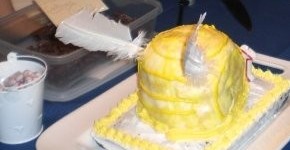Since 1997, JK Rowling has enchanted audiences across the globe with the story of a young wizard named Harry Potter. As a child who grew up while there was a new book in the Harry Potter series every few years, I was obsessed with the franchise for the majority of my youth (and quite possibly still am). The series has officially turned into movies and gained a physical presence at Universal Studios in Orlando, Florida, but Harry Potter has also fostered a community amongst its fans that has played out on both print and on the Internet. This community is called a fandom, and the Harry Potter Fandom is still going strong, despite the lack of new canon material.
Fandoms go further than providing communities for people; they also form cultures through people who share similar interests. Some fandoms inspire an almost religious belief and devotion, which “ha[ve] a similar degree of reinterpretation and turn[s] the authors and translators into famous figures” (Jenkins, 2006, p. 17). Works that become as popular as the Harry Potter series become mythologies, with their characters and stories turning into legends that are celebrated and recreated. Being part of the fandom means that you are a small part of that mythology, and people who create art based around the mythology are trying to “rearticulate them” in order to find some deeper meaning (Jenkins, 2006, p. 17). Because no single fan can know everything there is to know about a work, the fandom collects information from each of its participants in an attempt to know as much as possible. Fandoms
In order to understand the different forms of Harry Potter fan art, we first need to set some parameters. For the purpose of this project, “fan art” is defined as any creative work created by and for fans of a particular fandom. The goal of this project is not to define art, but rather to provide works that fit this decision. It’s up to you to decide where they fall in the realm of creativity. There are many different mediums and structures that fall under this definition, and throughout this website, you will find some works of art that, in my opinion, are good examples of what fan art can be. Typically, fan art plays with the canon of a larger work. Canon, or what officially happens within a work of fiction, can be toyed with in fan art. Artists have the opportunity to explore “what ifs” or alternate realities, which opens up the entire universe to anything. Some artists choose to stay within canon, depicting events that JK Rowling wrote, while others change the rules and imagine different, original scenes.
Transmedia is another important term, and one that gains meaning by the day. Simply put, transmedia is the act of storytelling through multiple mediums, many of which are online. The Internet has had a large influence on the structure and presence of the Harry Potter fandom. According to Henry Jenkins, a scholar of contemporary popular culture (2006), online communities are “expansive self-organizing groups focused around the collective production, debate, and circulation of meanings, interpretations, and fantasies in response to various artifacts of contemporary pop culture” (Jenkins, 2006, p. 137).
Because so much of the fandom exists online, participation is global, and anybody with an interest and access to the Internet can be actively involved. Being involved and participating are two of the largest trends in not just art, but in every aspect of life. People want to know that what they say matters, which is why the Internet has been the perfect complement to fandoms everywhere. One of the “aesthetics of our time” is that readers want to also be participants. People love to take ownership of what they see and make it their own. Moreover, by taking ownership and contributing to the fandom, people are experiencing the story in a new and exciting way.
The Harry Potter fandom has inspired truly amazing works of art in all mediums. The diversity and originality of the work represented on the Internet is astonishing, not just because it all came out of a book series, but also because the series only began 15 years ago. Fans of the novels and the movies have had less time than many fandoms to create fan art, but its online presence is massive, and it is here to stay.



